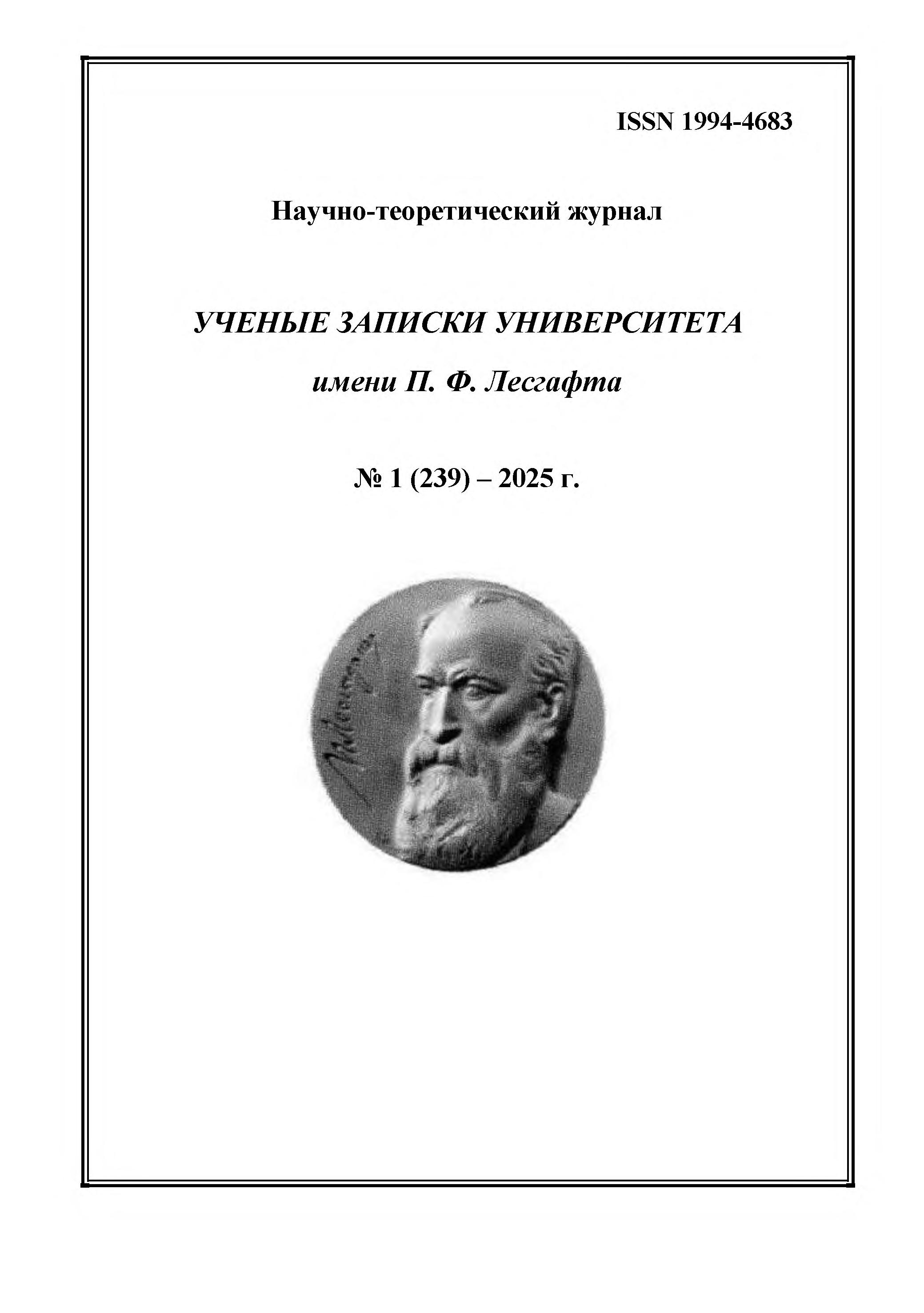Russian University of Sports «SCOLIPE»
Russian State University of Physical Education, Sport, Youth and Tourism
Russian University of Sports «SCOLIPE»
Russian Federation
employee from 01.01.1920 until now
Russian Federation
CSCSTI 77.29
The purpose of the study is to identify indicators that would have a significant impact on the organism, be energetically maximally demanding, while, on the other hand, not causing substantial shifts in the athlete's condition over an extended period. Research methods and organization. Testing was conducted, which included movement in defense, a 20-meter run, shuttle run, and high jump. During the testing, the time taken to complete the tasks and heart rate (before the test, after its completion, and during four minutes of recovery) were recorded, and the pulse debt accumulation intensity index (PDAI) was calculated. After the testing, a regression analysis was performed to determine the relationships between test results (completion time and load index based on heart rate dynamics) and points scored in the games. Research results and conclusions. Indicators reflecting the current psychophysical readiness of basketball players on college teams for the game have been identified, without causing fatigue and ensuring high predictive characteristics. The heart rate (HR) of players during the performance of technical-tactical actions in the men's team within the framework of ASB Championship matches has been established. The dynamics of HR and the 'cost' of technical-tactical actions of basketball players have been analyzed both in defense and attack. The results of the regression analysis of the testing data demonstrated a correlation between the number of points scored and the time indicators for completing the tests, which can be utilized in the development of a predictive model for assessing the probability of success in the game. The obtained results underscore the importance of considering the game situation when planning the training process and assessing athletes' readiness for competitions. This study may serve as a foundation for further developments in the preparation of basketball players and enhancing their effectiveness on the court.
basketball, sports physiology, heart rate, pulse duration, technical and tactical performance indicators
1. Kozlov A. V., Bleer A. N., Levushkin S. P., Sonkin V. D. (2022), “The relationship between the intensity of pulse debt accumulation and the rate of oxygen demand and lactate accumulation in the blood when performing extreme cyclic exercises of varying duration”, Sports medicine: science and practice, 12 (3), pp. 43–50, https://doi.org/10.47529/2223-2524.2022.3.2.
2. Levushkin S. P., Zhukov O. F., Sonkin V. D., Skoblina N. A. (2022), “Organization and monitoring of physical health of students of general education organizations”, Moscow, IVF RAO, 98 p.
3. Sablin A. B., Chernyshev S. V. (2022), “The influence of psychophysiological indicators on the effectiveness of competitive activity of basketball players of student teams”, Bulletin of the Moscow State Pedagogical University. Series: Natural Sciences, No. 2 (46), pp. 58–66, DOIhttps://doi.org/10.25688/2076-9091.2022.46.2.06.
4. Abdelkrim N. B., El Fazaa S., El Ati J. (2007), “Time–motion analysis and physiological data of elite under-19-year-old basketball players during competition”, British journal of sports medicine, Vol. 41, No 2, pp. 69–75, DOIhttps://doi.org/10.1136/bjsm.2006.032318.
5. Anashkina I. A., Fesenko M. S., Laptev S. O. (2025), “Functional cost of technical and tactical actions based on heart rate data performed in real time by basketball players of the student team”, Gamification. Scientific approach, No 2, pp. 1–7.







